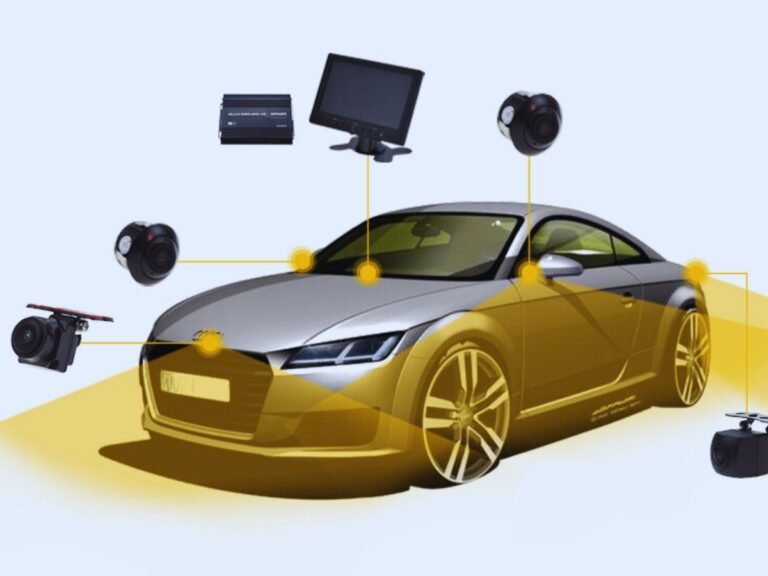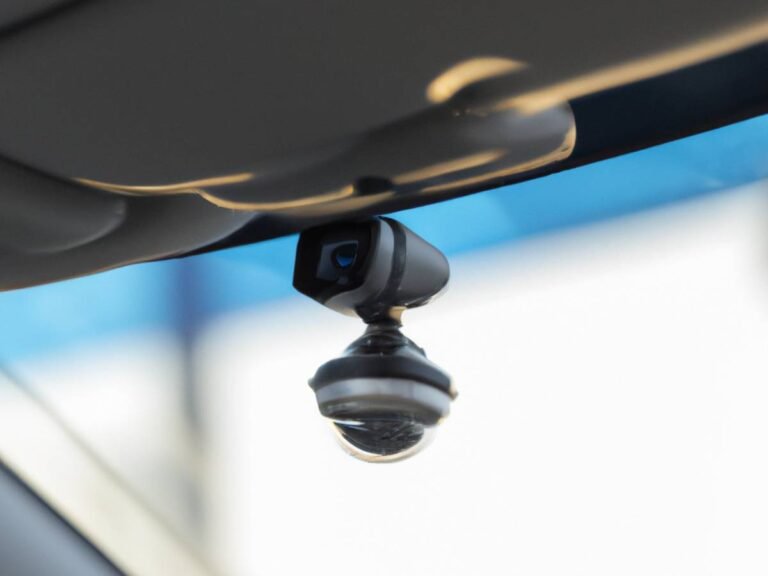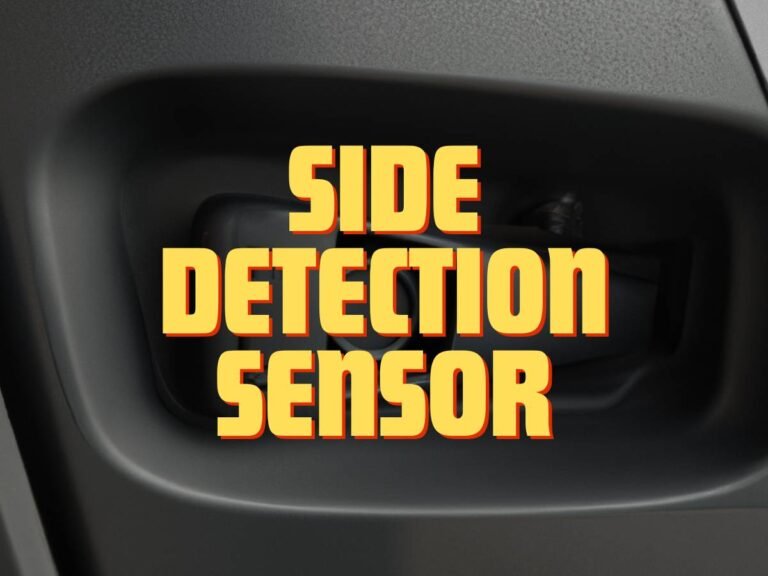Enhancing Safety: Aftermarket Blind Spot Monitor

Regarding vehicular safety, Blind Spot Monitors (BSMs) stand as essential guardians, offering a critical layer of protection against potential accidents. Before delving deeper into the aftermarket options available, it’s crucial to understand the fundamental role BSMs play in ensuring road safety.
What Is an Aftermarket Blind Spot Monitor?
Blind Spot Monitors, abbreviated as BSMs, are innovative safety features integrated into modern vehicles. These systems detect and alert drivers about objects or vehicles in their blind spots. What is a blind spot? It is the area outside the driver’s peripheral vision, causing the risk of collisions during lane changes or maneuvers.
Importance of Blind Spot Monitors
The significance of Blind Spot Monitors(BSM) in enhancing vehicle safety cannot be overstated. By providing real-time alerts to drivers regarding nearby vehicles or obstacles outside their field of vision, BSMs effectively mitigate the potential for accidents caused by blind spot-related errors.
In today’s bustling traffic scenarios, where lane changes are frequent and often swift, Blind Spot Monitors serve as invaluable aids, augmenting drivers’ awareness and reducing the likelihood of hazardous situations. Their role in preventing collisions and promoting safer driving practices underscores the importance of integrating such advanced safety technologies into vehicles.
As we explore the realm of aftermarket Blind Spot Monitors, it becomes imperative to recognize their contribution to bolstering vehicle safety standards and empowering drivers with enhanced situational awareness on the road.
How do Aftermarket Blind Spot Monitors Differ from OEM BSMs
While OEM BSMs are integrated into vehicles during the manufacturing process, aftermarket BSMs are installed post-purchase, typically by authorized dealerships or certified technicians. This key distinction allows drivers to upgrade their vehicles with the latest safety features, regardless of the make or model.
Additionally, aftermarket BSMs often provide a wider range of compatibility options, catering to a broader spectrum of vehicles. This flexibility allows drivers to enhance the safety of their existing vehicles without the need for a complete vehicle upgrade.
Benefits of Buying a Blind Spot Monitor in Aftermarket Variation
Here are some pros of choosing an aftermarket blind spot monitor:
- Affordability: Aftermarket BSMs offer a cost-effective alternative to OEM options, allowing drivers to enjoy advanced safety features without breaking the bank.
- Customization: With aftermarket BSMs, drivers have the freedom to choose from a variety of brands and features, enabling them to tailor their safety solutions to suit their specific needs and preferences.
- Versatility: Aftermarket BSMs are designed to be compatible with a wide range of vehicles, making them accessible to a broader audience of drivers.
- Enhanced Safety: By providing real-time alerts about vehicles in blind spots, aftermarket BSMs significantly reduce the risk of accidents, promoting safer driving practices on the road
Safety Concerns and Regulations Regarding Aftermarket Blind Spot Monitors
When considering aftermarket blind spot monitors for your vehicle, ensuring compliance with safety standards is paramount. These safety standards are in place to guarantee that the installation and operation of aftermarket BSMs meet rigorous safety requirements.
By opting for reputable aftermarket BSM brands that adhere to established safety standards, drivers can rest assured that their safety systems are reliable and effective. Look for certifications and endorsements from recognized authorities in automotive safety to validate the compliance of aftermarket BSMs with industry regulations.
Legal Implications and Regulations
Understanding the legal aspect of aftermarket blind spot monitor installation is essential. It helps ensure compliance with relevant regulations. While aftermarket BSMs offer invaluable safety enhancements, it’s crucial to be aware of any legal implications associated with their installation and use.
Before installing aftermarket BSMs, drivers should research and understand the legal requirements specific to their region or country. Some jurisdictions may have regulations. That may include the type of aftermarket safety devices permitted, installation procedures, or warning alerts.
Consulting with legal experts or automotive professionals can provide valuable insights into the legal implications of aftermarket BSMs and help drivers navigate any regulatory challenges effectively.
By addressing safety concerns and adhering to applicable regulations, drivers can confidently integrate aftermarket Blind Spot Monitors into their vehicles, enhancing safety without compromising legal compliance.

Future Trends in Aftermarket Blind Spot Monitors
The evolution of aftermarket Blind Spot Monitor (BSM) technology is closely intertwined with the advancement of Advanced Driver Assistance Systems (ADAS). As vehicles become increasingly equipped with sophisticated safety features, aftermarket BSMs are expected to seamlessly integrate with these systems to provide enhanced protection on the road.
By integrating with ADAS, a blind spot detection kit can leverage a broader array of sensor data and communication protocols. In short, it leads to more accurate detection of vehicles in blind spots. It enables proactive collision avoidance measures, such as automatic braking or steering interventions, further augmenting the safety benefits offered by aftermarket BSMs.
As manufacturers continue to refine and expand their ADAS offerings, aftermarket BSMs are poised to evolve in tandem, ensuring compatibility and interoperability with the latest advancements in vehicle safety technology.
Predictions for the Future of Aftermarket BSMs
Here are some predictions for the trajectory of aftermarket BSM technology:
Enhanced Connectivity
The best aftermarket blind spot detection system of the future is expected to leverage advanced connectivity solutions. That includes the likes of 5G technology to facilitate seamless communication between vehicles and infrastructure. It will enable real-time data exchange, enhancing the accuracy and responsiveness of BSMs in detecting potential hazards.
Artificial Intelligence (AI) Integration
AI-powered algorithms will play a pivotal role in the evolution of aftermarket BSMs, enabling predictive analysis of driving patterns and environmental conditions. By harnessing AI capabilities, aftermarket BSMs can anticipate potential blind spot scenarios and preemptively alert drivers, further reducing the risk of accidents.
Expanded Sensor Capabilities
Future aftermarket BSMs will incorporate a diverse array of sensors, including radar, lidar, and camera-based systems, to provide comprehensive coverage of surrounding traffic conditions. This multi-sensor approach will enhance the reliability and accuracy of BSMs in detecting vehicles in blind spots, even in challenging environments.
Seamless Integration with Vehicle Interfaces
As vehicle interfaces become increasingly sophisticated, aftermarket BSMs will seamlessly integrate with onboard infotainment systems, providing intuitive user interfaces and customizable alert settings. This integration will enhance the user experience and ensure that drivers can easily access and configure BSM features to suit their preferences.
Conclusion
In conclusion, aftermarket Blind Spot Monitors (BSMs) offer a myriad of benefits that enhance vehicle safety and driver confidence on the road. From providing real-time alerts about vehicles in blind spots to offering customizable features and compatibility with a wide range of vehicles, aftermarket BSMs represent a versatile solution for bolstering safety standards.






